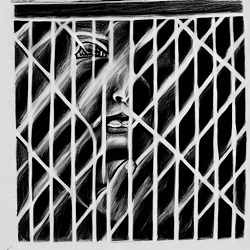
Oppression of Vulnerable Groups
Targeted oppression of vulnerable and minority groups can emerge from conservative to authoritarian governments and the rise of extremist groups. Human Rights are violated for selected groups.
A (Optimist)
Global recognition of minority rights - supported by international jurisdictions
- Technology and social developments enhance minorities awareness about their rights
- High courts and international jurisdictions contribute to promote the culture of respect for human rights, transnational (and properly enforceable) regulation to protect vulnerable groups is in place
- Strong international civil society cross-links provide a private network to help educate about rights and report about violations
- The recent rise in LGBT+ rights spreads to other countries
- Climate change sharpens people’s perspective on how we are all vulnerable, triggering cooperation and alleviating oppression of minorities
- After the wave of de-democratisation eases off, another wave of democratisation - with associated lower levels of regime violence develops
B (Pessimist)
Ever more authoritarian regimes make use of new technologies to oppress vulnerable groups
- Increasing authoritarianisation and rise of extremism lead to less international pressure to respect human rights and regimes become ruthless: violate and suppress (e.g. fewer women rights and LGBT+ rights)
- Surveillance over ethno-religious minorities increases
- People prefer to live in “normalised” (social norms) closed societies and do not open to diversity
- Measures against the pandemic are used to reinforce the oppression of minorities, in terms of access to vaccines and healthcare (new potential for pressurising minority leaders)
C1 (Mediator)
Recognition of minority rights is restricted to some global regions - differences increase
- Gender-based minorities gain social and political space in certain countries, while they remain discriminated in some regions, other minorities remain oppressed
- Minorities that have access to international cross-links and international support are less oppressed
- Oppression of some groups becomes more visible and less camouflaged
C2 (Mediator)
Minorities in many countries are highly surveilled, controlled and made socially and politically invisible
- Surveillance technologies (incl. facial recognition etc.) and ‘govcoins’ allow regimes to tightly control many (especially smaller) ethnic and other minorities, to the point where they cannot organise politically
- Education and information in some countries are controlled by the regime and vulnerable groups are less aware of their rights
- Little need for the regimes to use violence against minorities that are invisible, this, and the fact that exits from the country are monitored, keeps refugee flows low
D (Innovator)
Oppression becomes transparent through new technology and is overcome in many states
- By the use of new technologies unjust oppression in various countries is monitored and becomes transparent regardless of ethnic identities
- Mechanisms are in place that allow many individuals to seek international protection if they are oppressed and vulnerable (using the new technologies as a proof), without penalising them or forcing them to go on a journey